Week 1 - development of evolutionary theory before darwin
1/44
There's no tags or description
Looks like no tags are added yet.
Name | Mastery | Learn | Test | Matching | Spaced |
|---|
No study sessions yet.
45 Terms
what are the 2 mains points ab the origin of species (as of 1859)
1. species change over generations/ "descent w modification" is aka evolution (accepted as fact)
2. natural selection causes evolution (still debated)
what r the 2 definitions of the the word "theory"
the everyday sense: a hypothesis proposed to be an explanation, an indivisual view,
the scientific sense: Hypothesis that has been confirmed by observation or experiment and is accepted as cause for known facts. Held as general laws, principles or causes of something observed.
examples of scientific theories
The atomic theory of matter
The heliocentric theory of the solar system
*not rllt debated
name and order the evolutionary thoughts before darwin
1. ancient greece (anaximander & empedocles)
2. plato (2 worlds theory)
3. aristolte (scale/ladder of nature)
4. natural theology
5. Carolus Linnaeus (invented taxonomy)
6. Georges Cuvier (catastrophism)
7. James hutton (gradualism)
8. Thomas Malthus (principle of population)
9. charles lyell (uniformitarianism)
10. Jean-Baptiste de lamarck (inheritance of aquired traits)
11. August weisman (disporved lamark)
What did Anaximander (greek) believe?
life began in the ocean and humans are descendant of aquatic ancestors
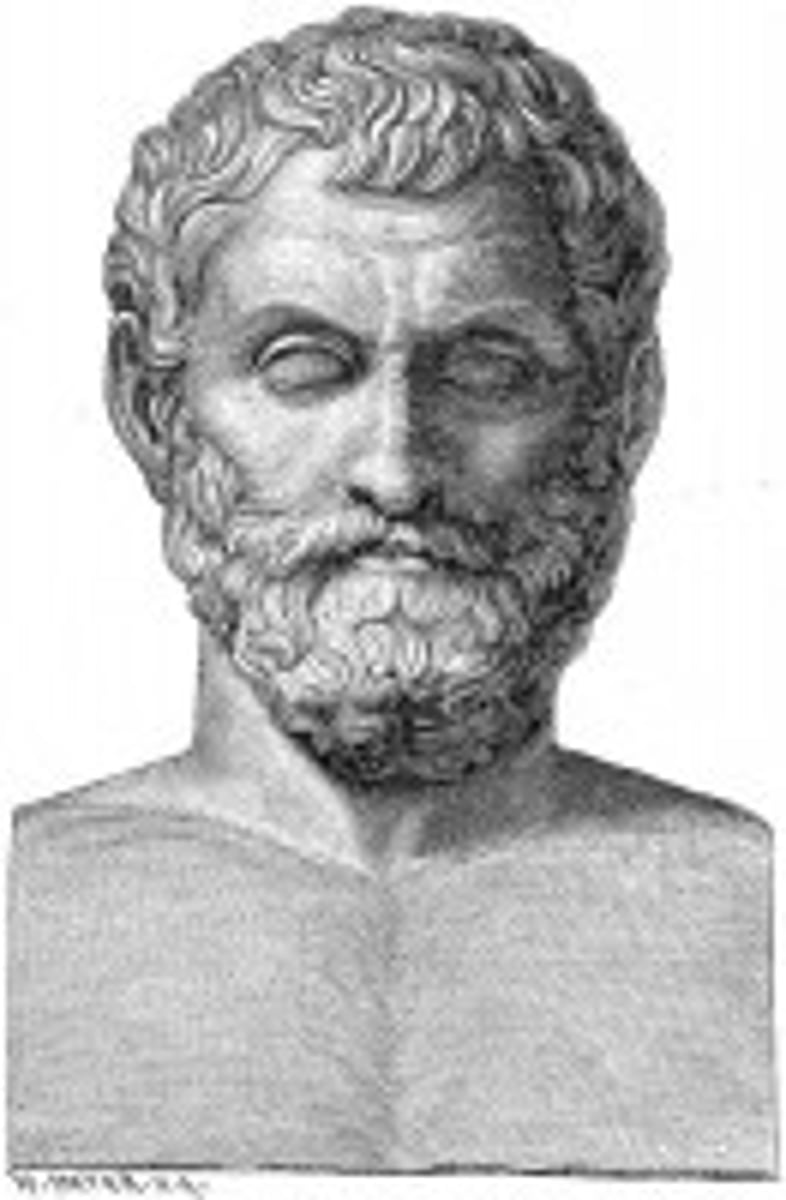
What did Empedocles (greek) believe?
life began from random processes and whicever lifeforms were not successful died out
were the acient greece ideas of evolution widley accepted
no
what did plato believe ab evolution
two world theory - believed there were 2 seperate parallel worlds the perceive and the ideal world
Perceived world = Imperfect, not real/an illusion
ideal world = perfect, real, but imperceptible world
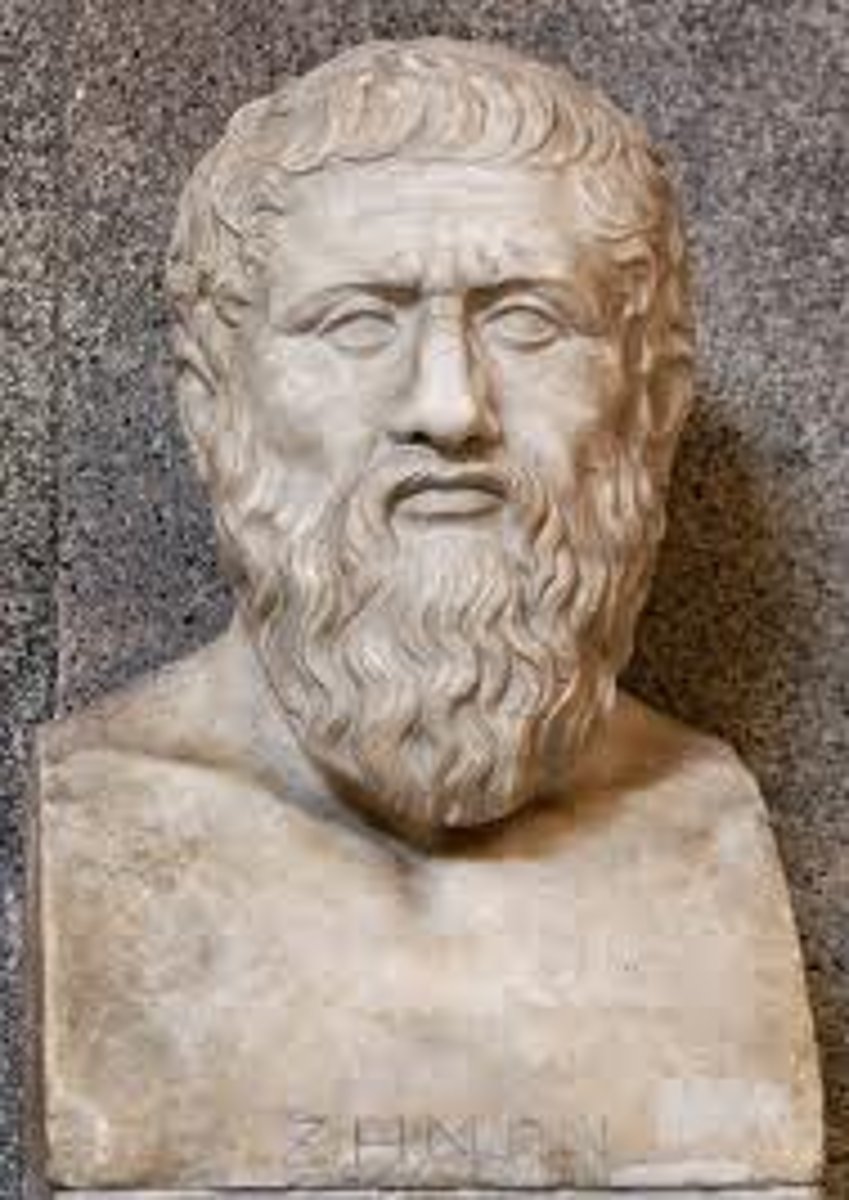
why did plato believe there were different individuals witin a species according to his two world theory, and what is the immplication of this theory?
within animals each individual is just a distorted reflection of the ideal individual.
but if perfect individual already exist what is the reason for evolution
What did Aristotle believe?
Scale/Ladder of nature = ordering species from least to more "perfect" (complex)
Thought all creatures were created to fill a position in the ladder so there r no vacancies
Issue: no evolution
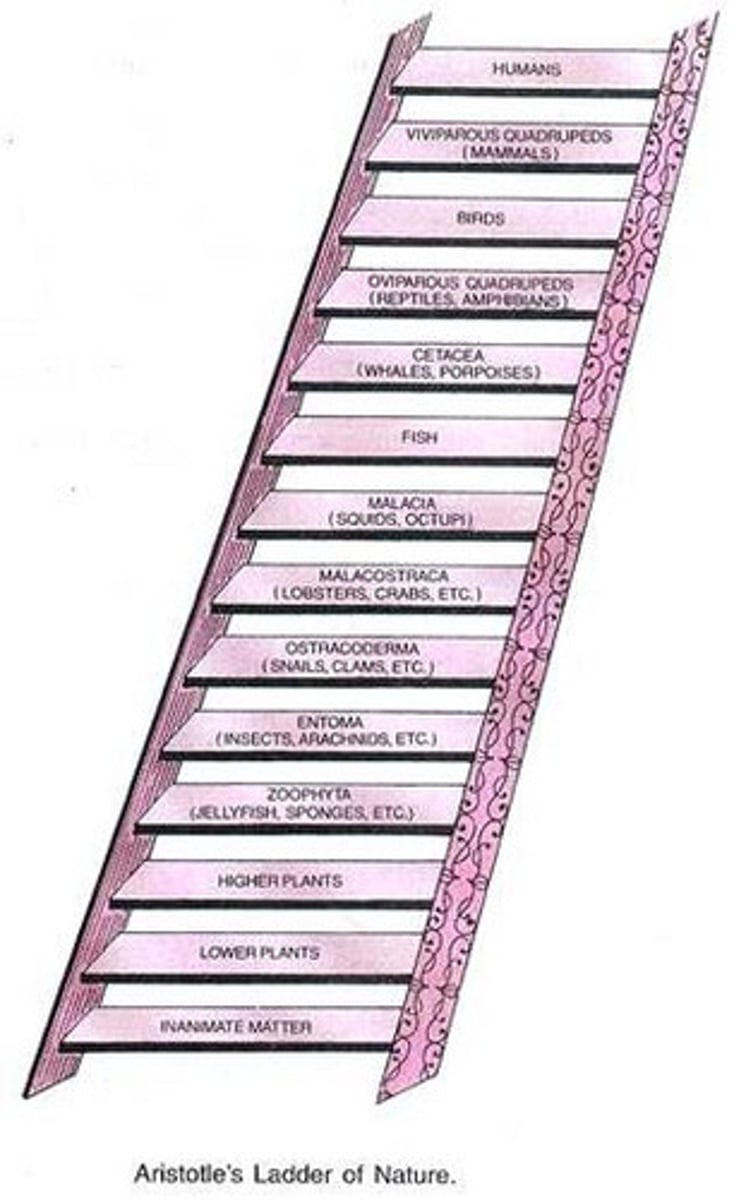
what is natural theology
biology was closley tied to religion: idea that studying and observing nature can and is done to better understand god
how did natural theology explain adaptations? what r adaptations
adaptaion: traits that help organisms survive + reproduce in a particular environment
natural theology: believe adaptation is proof of God's "divine plan"
how was aristotles scale of nature incorperated into natrial theology
species were created (by god) deliberatley to fill a specific role in nature and they cannot change
who invented taxonomy and what is it
carolus linnaeus
- science of naming and classifying living things in a binomial manner
(he had a 7-lvl heierarchial classification system)
how were species named before taxonomy in the 18th century
by polynomial names - upto 12 latin words
linnaeuses publishings
1753- first species plantarum - poly and binomial shorthand names for all known plans
'58 - then, same for animals
what is a binomial name made of
1. Genus = the first word of the polynomial
(general name * simmilar species share the same genus but dif specfic name)
2. species specific name
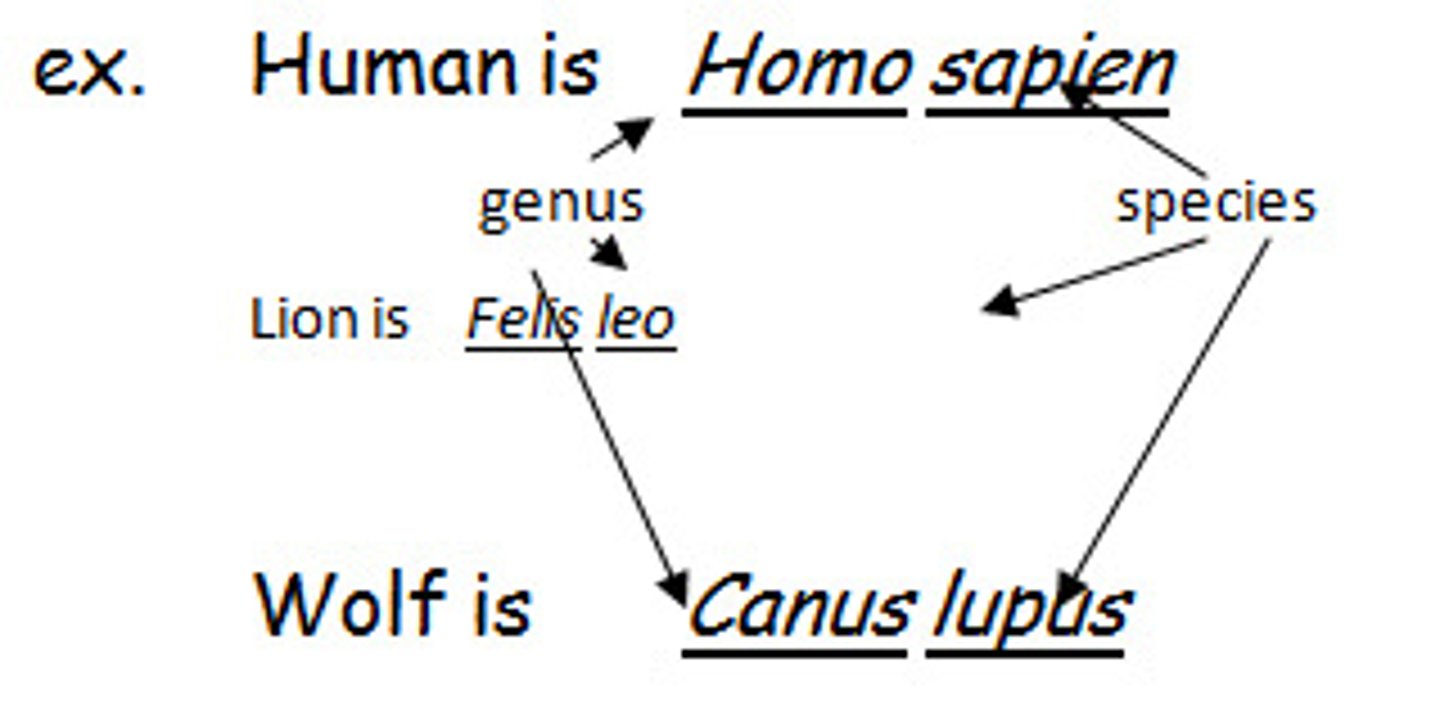
why does the piranga rubra and paradisaea apoda birds have different genera (=pl. of genus)
the bird species are not similar enough
can dif species have the same specific name but dif genus
yes, eg piranga rubra and paradisaea rubra
desnt mean they have any similarities
naming conventions of scietific (latin) names
1. should always be italicised or underlized
2. generic name = capitalized, specific name = not
3. genus can be abrv. after first use (if no confusion)
authority in binomial names convention
including the taxonomists name. name must be capitalized but not italicised
eg. Paradisaea rubra Daudin
subspecies in binomial names convention
both considered one species but gegraphically distinct "races". Incudes a third subscefic name italicised but not capitalized
eg. Strix occidentalis caurina (northern spotted owl) vs. Strix occidentalis lucida (mexican spotted owl)
naming convention for a unknown species within a genus
Use "sp." for second word
Eg. an unknown species of bird-of-paradise = Paradisaea sp.
naming convention when reffering to multiple species within a genus
use "spp." for second word
E.g. more than one species of bird-of-paradise = Paradisaea spp.
naming conventions for common names
Not capitalized unless occurs at begin of a senses or contain proper names
eg. Goldies bird-of-paradise
naming convention for an individual that looks like a speciesz in a genus
cf. between genus and specific name
eg. looks like a species of bird-of-paradise = Paradisaea cf. rubra.
lineaus's hierarchial classification rank
7 ranks - every species is assigned to a named group or taxon in each rank
(new one - domain, group of simmilar kingdoms)
kingdom
phylum
class
order
family
genus
species
"kid prefer cheese over fried green spinach"
whatt is the plural of species
species
what is a taxon
a group in any of the hierarchial ranks eg. nymphalidae is a taxon of the family rank for monarch butterflies
additional levels to lineaus ranks
super - 1 above
sub - 1 below
infra - 2 below
eg. superclass, class, subclass, infraclass, superorder
what is the difference bw lineaus and aristotles ransk or classifications?
lineaus ranked based on physical appearance (shape, morphology)) while aristotle ranked based on function or complexity
eg. a flying fishd
a - grouped w birds
l - grouped w fishes
linneas views on evolution
NOT an evolutionist - evem thouhh is 7lvl hierarchial system is suggestive of common descent
what are fossils, where r they found and what is the study of them
mineralized remnants/impresssions of past organisms
found in rocks or even seashells and mointains
palentology
georges cuvier
- first to propose extinction ( saw fossils that had no modern species that resembled it)
- catastrophism (castastropies occurs that wiped out a localpopulation and new ones migrated to replace them, + supernaturally created species)
What were Cuvier's key observations about the history of life
1. Fossils occur in sedimentary rock in its layers called strata/stratum
2. each stratum has its own fossils
3. Fossils in older strata tend to have more difference from modern day organisms thn recent strata
James Hutton (1726 - 1797)
Gradualism theory - very slow processes causes dramatic results in geological feture (like canyons)
rejected. catasptrophism (cuvier)
Thomas Malthus
wrote essay - priciple of population - human populations grow faster than production of food causing fight for survival
Charles Lyell
expanded on huttons ideas - uniformitarianism
(same geological processes that occured in the past occur today)
how did hutton and lyells ideas run againstthe church doctine atp
if they were right the earth would be much older than the chirch thought bssed n biblical timelines
3 Implications from Hutton, Lyell & Malthus's theories
1. Earth must be very old
(Must've taken millions of years to form structures like the grand canyon)
2. Even if processes are Slow, subtle, over long periods of time they can have a dramatic effects
3. Resource scarcity is a principle that generates conflict
**Their ideas did later inspire darwin even if they did not believe in biological evolution at the time
who was Jean-Baptiste Lamarck, what was his theory based on what observations
first pro biologist to support biological evolution
theory inheritance of aquired traits (observed the same fossil evidence as cuvier - that fossils become less simmilar to modern species the older they are- but interpreted it as evidence that pecies change/evolve over time)
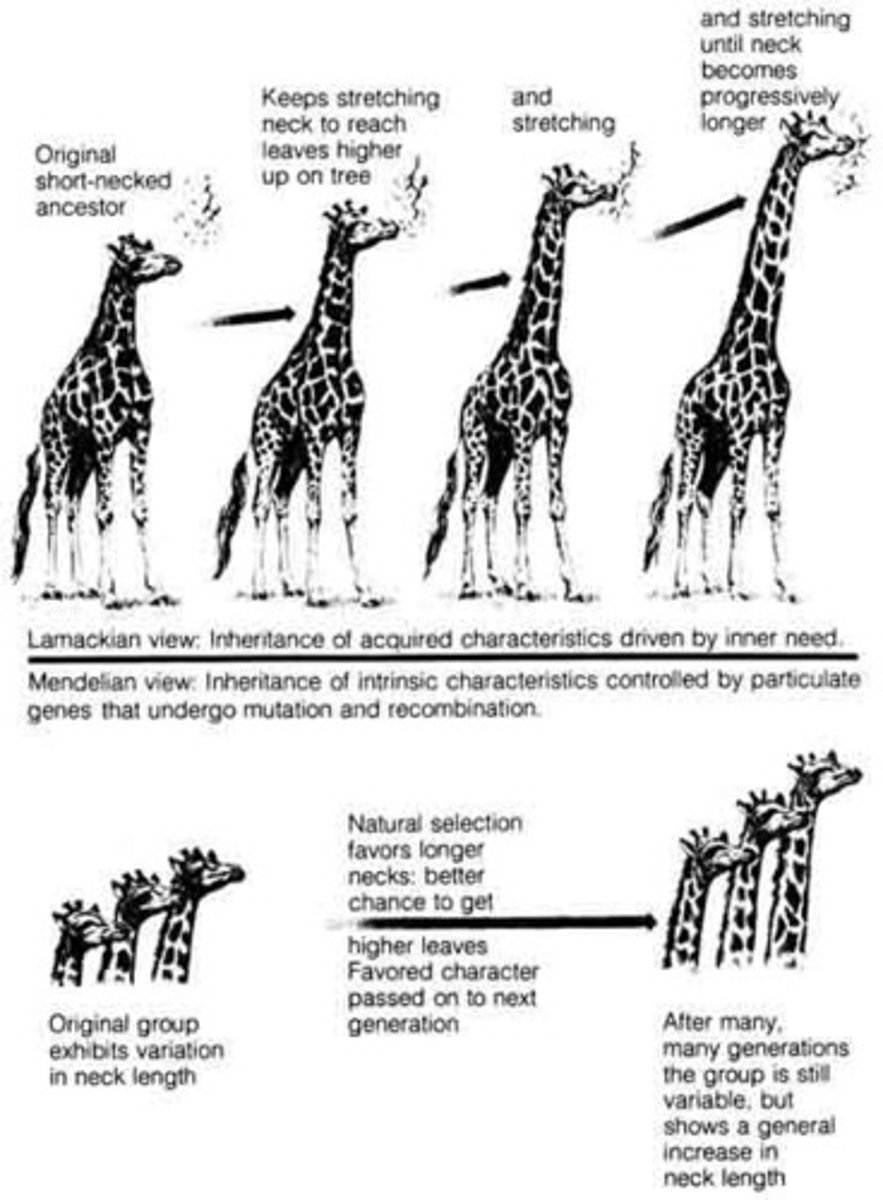
wjat was lamarks theory of inheritence of aquired traits
beleive evolution occured due to an individual adapting to their environment during their lfietime and passign those adapted trait to their offspring (NOT WHAT HAPPENS)
lamarks 2 principles of nature
1. use and disues (dont use and organ = shrinks & disapears , use = grows/strengthens)
2. inheritance of aquires characteristics (aquisitions or losses due to use and disuse are heritable)
who tested and disproved lamarks theory
august weisman (1834-1914)
august weisman
Disproved Lamarck's theory of acquired traits by cutting the tails off of 22 generations of mice. All the babies were born with a tail.
*the only way an aquired trait could be passed on is if a parent passed on a mutation they got but this is RARE